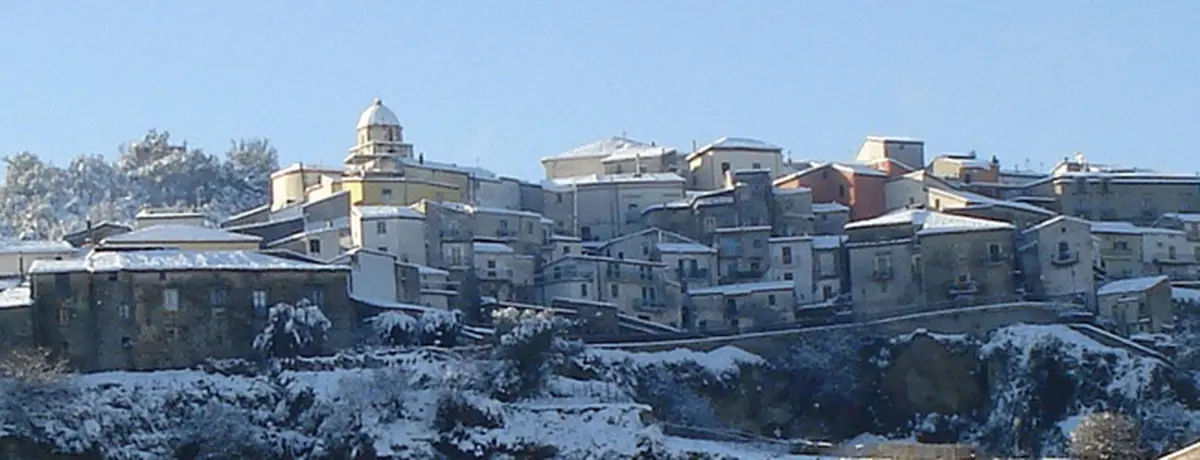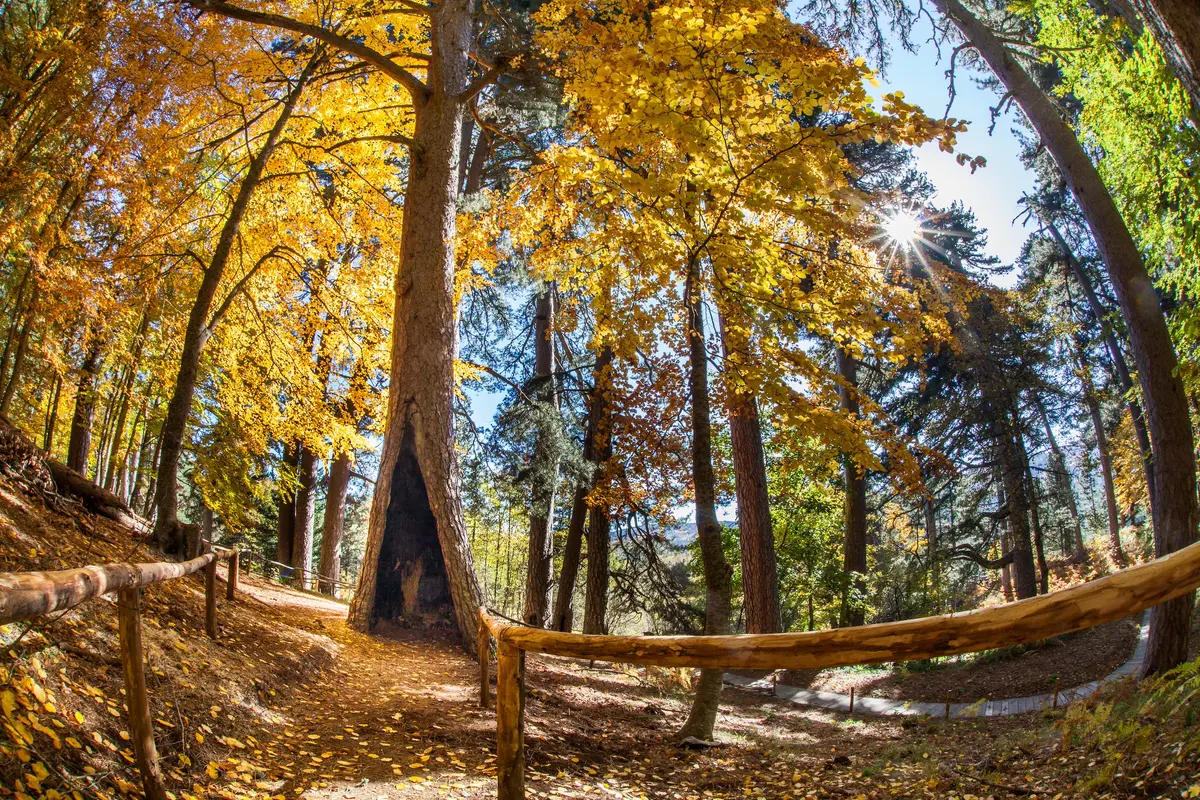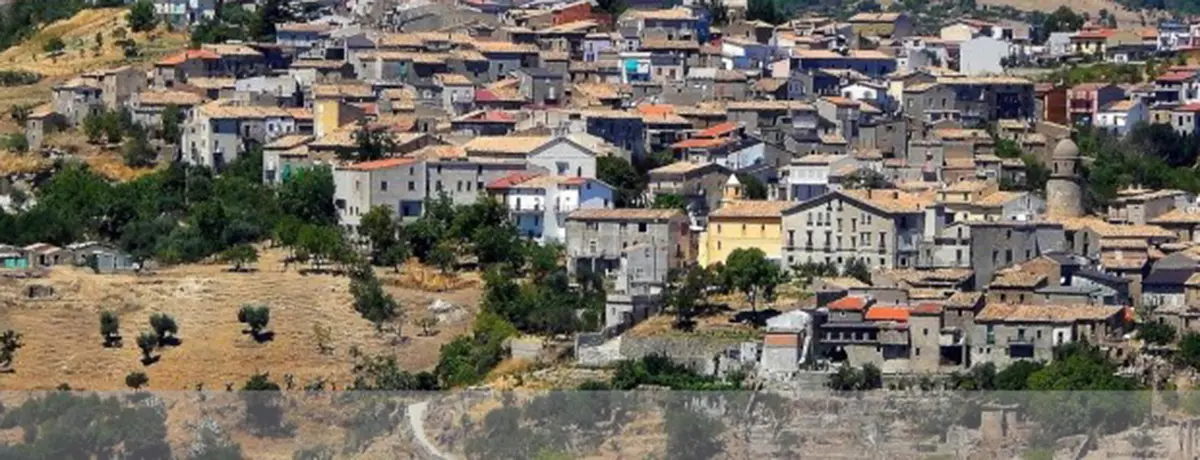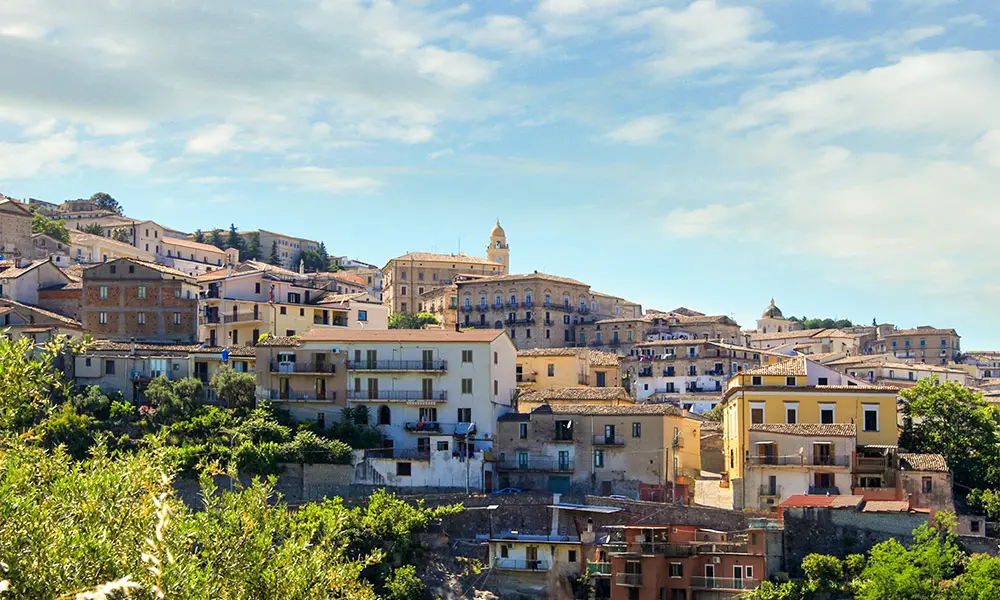Caloveto
Caloveto, the land of caves

Mountain
Caloveto is a small inland hub of the Cosentino, not far from the Ionian Sea, with a village that overlooks the rock.
In addition to the typical alleys of its historical town centre, many of whom can only be reached on foot, here it is possible to admire 18th century buildings and breathtaking landscapes.
The area of Caloveto boasts a true network of tunnels under the open sky, made of sandstone (known locally as tuff or “tuffa”) that houses the town.
The town lies along the ridge of several hills forming the roccky spur of the Sila Grande, on the right side of the valley where the Trionto river runs. It was probably founded by a group of Acoemetae monks who dug caves in the rock and used them as a monastery for the worship of Saint Giovanni Calibita (St John Calabytes), as a church and to supply water to the people who gradually settled there. Over time, around the monastery dedicated to the saint, a farmer community began to develop, from which Caloveto's first settlement emerged. A large part of Caloveto’s religious heritage is displayed in the Diocesan Museum which preserves items from the XVII-XIX centuries including monstrances, chalices, pyxes, and chandeliers of considerable worth. The chiesa madre (main church), with its Romano-Byzantine style façade and has a Latin cross floor-plan. Inside, it features a crucifix of the XIV century, a wooden statue of San Giuseppe (St Joseph) and a goblet of gilded bronze of the mid-17th century. The current structure of the Church must date back to the fourteenth century, and even if the date “1542” appears on the rose window and on the top of the pillar of the baptismal font; this date probably refers to the building’s first restoration works, rather than its construction. Further changes were made to the place of worship around the second half of the XVII century. A path, from the historic town centre leads to its slopes where, dug into the rock, it is possible to admire the caves of San Giovanni (St John); a place where once upon a time the hermit Calibiti monks lived. The hills surrounding the town allow access to various nature trails and there is an equipped picnic area near Cozzo del Pupatolo. During the feast of the patron saint, San Giovanni Calibyta (St John Calabytes), that is held on 15 January, in addition to the Holy procession, typical popular games also take place. During the months of July and August a large number of cultural and recreational activities are organised, also due to the presence of many emigrants who return to the town for the summer holidays. The “fiera del 13 maggio” is held in the town of Ponte Trionto and has very ancient origins. On Christmas and New Year’s Eve, the traditional fireworks display takes place in the piazza, where everyone dances to the sound of bagpipes.
Hermit Caves
The area of Caloveto boasts a true network of tunnels under the open sky, made of sandstone (known locally as tuff or “tuffa”) that houses the town. Centuries-old caves which gave shelter to exiles, ascetics, anchorites, hermits and saints, but also in more recent times, to evacuees and brigands. The building of these man-made caves was initiated during the VII-VIII century by patient Calabrian-Greek monks, known as "Basiliani" (Basilians) which, fleeing from areas of the Byzantine Empire, by digging, built shelters, churches and monasteries. Using this technique the monks built the important settlement of the monastery of S. Giovanni Calibyta (St John Calabytes), that gave the town its name.
The grotte di San Giovanni Calibyta (Caves of St John Calabytes) are intimately linked to the emergence of Caloveto as around this first series of caves a cluster of houses emerged, which over time, served as accommodation to a small farming community; thus establishing the foundations of what would later become present day Caloveto.
Points of interest
In front of the Chiesa Madre (main church) visitors will find a church known as Chiesa del Carmine or "donna Aurora” (Lady Aurora) as it was built by a noblewoman (lady Aurora Mazziotti in Pirelli) at the beginning of the nineteenth century as a chapel attached to the palazzo del barone De Mundo, that overlooks the town square. Restoration works which followed those of 1992 gave back to the church over two centuries of history. In addition, the chapel dedicated to S. Antonio da Padova /St Anthony of Padua), outside the village (a place of pilgrimage in during the month of June), was also restored and embellished recently. In the vicinity of the chapel of S. Antonio da Padova there is another church (now in ruins) with a Latin cross floor-plan; the Chiesa di Santa Rita (Church of Santa Rita). Ancient is the origin of the Chiesa dell'Annunziata (Church of the Annunziata) with a Latin-cross floor-plan; today it is a parish oratory that has been elegantly restored, in the town's centre; long ago, however, it was located outside the town and housed Cenobite monks. Palazzo de Mundo stands in the town central area. It is a square building erected at the beginning of the 20th century. Palazzo Comite is located at the heart of the old town. This evocative building dates back to the 18th century and includes a peculiar covered quadrangular courtyard and a cave dug into the rock. The Neoclassical Casa Caruso is a remarkable building built during the second half of the 19th century. Built on a rocky hill, overlooking the valley below, shows clear evidence of an ancient activities linked to agriculture, such as the processing of olives: mills, presses, millstones and farm equipment. In particular, the mill is characterised by a series of round arches and a porch, as well as Neoclassical fluted cornice. Palazzo Pirelli is a very ancient building dating to the first millennium. Originally, it was used as a convent by monks who escaped from the iconoclastic persecution. It rises on a rock overhanging the San Giovanni caves.
Gastronomy
Local gastronomic habits adapt themselves to the area’s trends, where simple but tasty ingredients are preferred for mealtimes with traditional recipes that most often go back to ancient times.
Sardellina (whitebait) with salt and pepper is among the specialities that visitors can enjoy together with excellent wine produced with grapes of local vineyards.
Useful information
What to know about Caloveto
Where to Sleep
There are 1 available accommodations.
Infopoint Caloveto
Piazza dei Caduti, 24, Caloveto
No result







